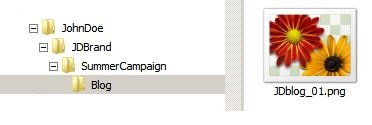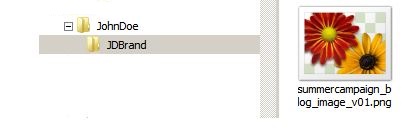How to Make Your Banners
Look Like a Million Bucks
Are you attending a trade show or job fair and need your banner to make an impact?
Banners are an incredibly popular marketing tool due to their instant message delivery, cost efficiency, simplicity in assembly/dismantling, and durability.
Ensure the maximum number of people sees your banner by designing one that looks like a million bucks.
7 Tips to Create Eye-Catching Banners
1. Lead with Your Brand
Make sure to leverage the most influential real estate by placing your logo at the top of your banner.
This is the spot your viewers will automatically look at and what they will most likely recall afterward.
Positioning your company logo and name in this area can help create an immediate connection with people who come across it, allowing them to recognize and remember you quickly!
2. Keep Your Message Brief
Use as few words as possible to attract attention and convey your message.
By avoiding excess text, you can ensure that onlookers aren't overwhelmed by an overcrowded banner.
Strive for conciseness - key phrases are all it takes to get noticed!
3. Incorporate Your Brand's Color Palette
Incorporate your company's signature colors into the banner.
Remember, sometimes simpler is better. Your color scheme should contribute to branding, not overshadow it with too many hues and saturations.
Ensure your palette complements the content while helping you communicate a consistent message across all platforms.
4. Utilize High-Quality Images
When designing your banner, rely on high-resolution visuals for maximum impact.
The sharper and more vivid the colors are, the easier they will be noticed by passersby.
Use a single premium image instead of overcrowding your banner with numerous lower-quality graphics for optimal results.
5. Include Your Contact Information
Prominently display your website URL, phone number, and relevant social media icons on your banner for maximum visibility.
Take your business to the next level with a QR code, enabling potential customers to instantly scan and store contact information on their smartphones.
Giving people easy access to connect with you later is essential.
6. Select the Correct Size
When selecting the right banner size for your chosen purpose, it is essential to get it right.
Oversized banners can be overwhelming and intrusive, while undersized banners may not attract the attention you seek.
To ensure that you make a statement, choose wisely when deciding on the dimensions of your banner to create maximum impact in its appropriate setting.
7. Use High-Quality Materials
Choose fabrics such as polyester or canvas to ensure your banner stands up against the elements and is durable enough for long-term use.
Waterproof ink is a great way to protect your banner's colors from fading, allowing you to maintain maximum visual impact and reuse your banner for subsequent campaigns.
A cleverly designed banner helps to draw attention to your message, showcase your branding, and ensure your banner withstands the elements for years to come.
Ready to get started designing your next banner? Contact us today. We're here to help!
Call: 516-561-1468



























